Exploring the world of food peels reveals a mix of surprising benefits and important precautions. Some peels can enhance dishes with unexpected flavor and texture, while others carry risks that require careful handling.
Here’s a closer look at eight peels that are safe and useful in the kitchen, along with nine that should be approached with caution. It’s time to uncover what’s really behind the skin of these everyday foods.
1. Kiwi Fuzz
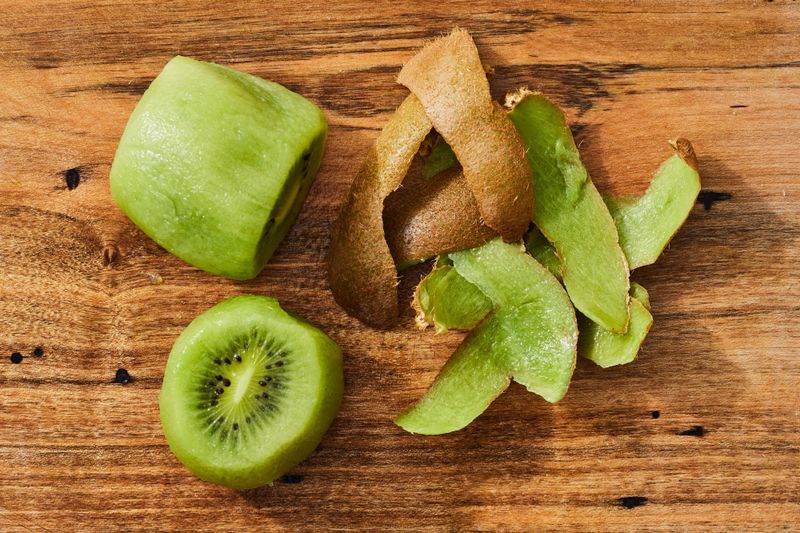
Many are surprised to learn that the kiwi’s fuzzy skin is not only edible but packed with nutrients. The brown, hairy exterior might seem unappetizing, yet it adds a unique texture and is loaded with fiber. Eating the skin increases the fruit’s vitamin C content by 50%, making it a nutritional powerhouse.
Don’t let appearances fool you! When washed thoroughly, the skin is a healthy addition to your diet. Next time you enjoy this vibrant fruit, consider embracing its full form for an extra zesty experience. Did you know? Some cultures use kiwi skin in traditional dishes!
2. Apple Peels
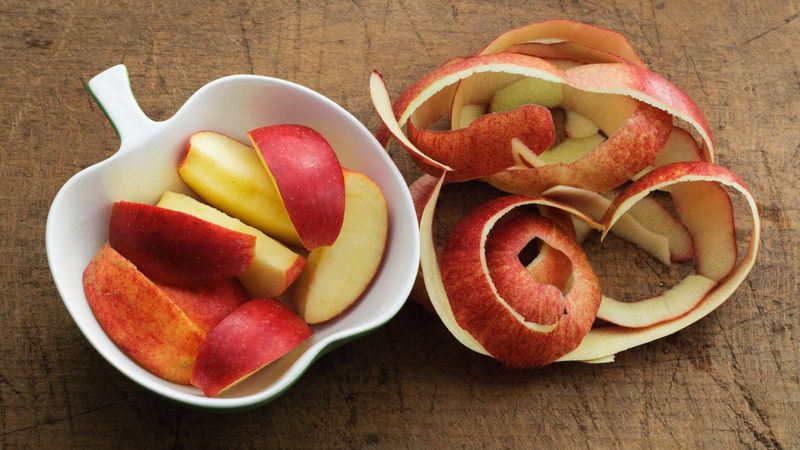
Often discarded without thought, apple peels are an underrated source of goodness. Rich in antioxidants, they contribute to improved gut health and may even help with weight management. The skin contains quercetin, a flavonoid that has anti-inflammatory properties.
Why miss out on such benefits? By including the peel, you enhance the apple’s flavor and nutritional profile. Whether you’re baking or snacking, keep the skin on for an added health boost. Fun fact: The apple’s skin contains half of the fruit’s dietary fiber!
3. Potato Skins
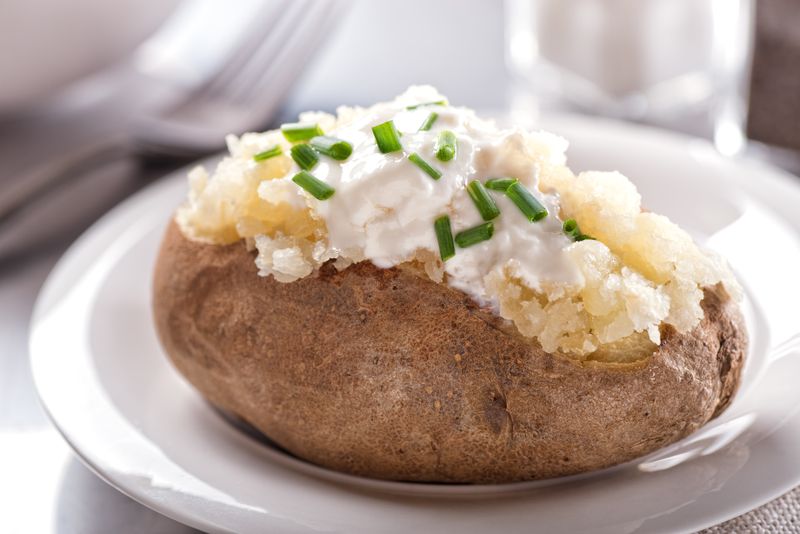
Potato skins are not only a delicious treat but also a nutritious one. When baked to a crisp, they become a delightful snack or side dish. Loaded with fiber, iron, and potassium, they offer more than just a satisfying crunch.
Including the skin in your meal is a simple way to boost overall nutrition. The next time you make mashed potatoes, think twice before peeling off the skin. Remember, many of the vegetable’s nutrients are found right under the surface!
4. Watermelon Rinds
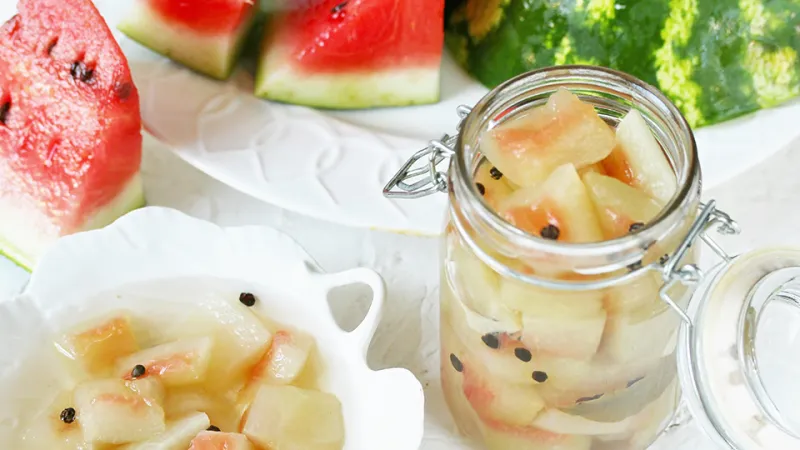
Watermelon rinds are more than compost material; they can be a surprising addition to your kitchen. The green exterior, often overlooked, is edible and can be pickled or stir-fried. It’s a refreshing way to add extra nutrients like vitamin C and B6 to your diet.
Curious about their taste? The rind is crunchy and has a mild flavor, making it perfect for creative recipes. Next time you indulge in this summer fruit, consider saving the rinds for a culinary experiment. Did you know they were used in ancient pickling recipes?
5. Citrus Zest

Bright and aromatic, citrus zest is a cook’s secret weapon. Extracted from the peel of lemons, limes, and oranges, it adds a zesty punch to dishes and desserts. The essential oils in the zest provide intense flavor without the acidity of the juice.
Incorporate zest into your cooking to elevate both sweet and savory recipes. It’s an effortless way to enhance dishes without adding extra calories. Interesting fact: The zest contains more vitamins than the fruit’s flesh!
6. Cucumber Peels
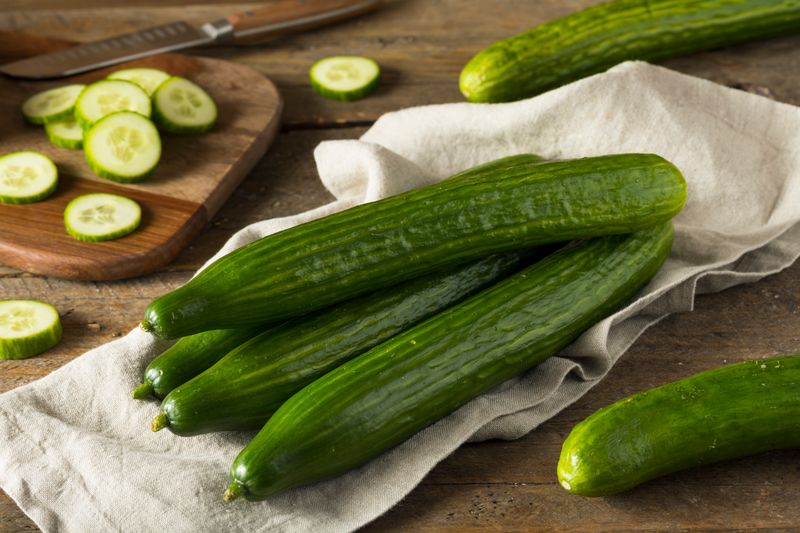
Cucumber peels are often removed, but they hold a wealth of nutrients. The dark green skin is rich in fiber and contains antioxidants that contribute to skin and eye health. Leaving the peel on your cucumbers can add a pleasant crunch to salads and sandwiches.
Why peel away the benefits? Retain the skin for a boost in nutrition and flavor. For organic cucumbers, keeping the peel is a safe and smart choice. Fun fact: Cucumber peels have been used in homemade beauty treatments!
7. Pumpkin Skin

Embrace the unexpected by utilizing pumpkin skin in your recipes. Though tough, when roasted, it becomes tender and flavorful. The skin is rich in fiber, which aids digestion, and also contains antioxidants that support your immune system.
Trying new culinary adventures? Include pumpkin skin in soups or roasted dishes for a nutrient-packed meal. Remember, the outer layer isn’t just for decoration; it’s a valuable part of the pumpkin!
8. Mango Skin

Mango skin can be an acquired taste, but it’s worth considering. Packed with polyphenols and vitamin E, the skin has anti-inflammatory properties. While some find the texture a bit chewy, others enjoy the added complexity it brings to the fruit.
Considering the benefits, it might be time to rethink discarding the peel. For those adventurous with their taste buds, mango skin offers a whole new way to enjoy this tropical delight. Did you know? Mango skins are used in traditional remedies in some cultures.
9. Banana Peels

Despite their slippery reputation, banana peels are not commonly consumed due to their tough texture and bitter taste. While they are technically edible and contain nutrients like potassium and fiber, they are often used in cooking only in specific recipes or cuisines.
Using them in smoothies or baking can mask their bitterness. Still, they remain more of an acquired taste, often better suited for composting unless you’re feeling particularly adventurous in the kitchen.
10. Avocado Skin
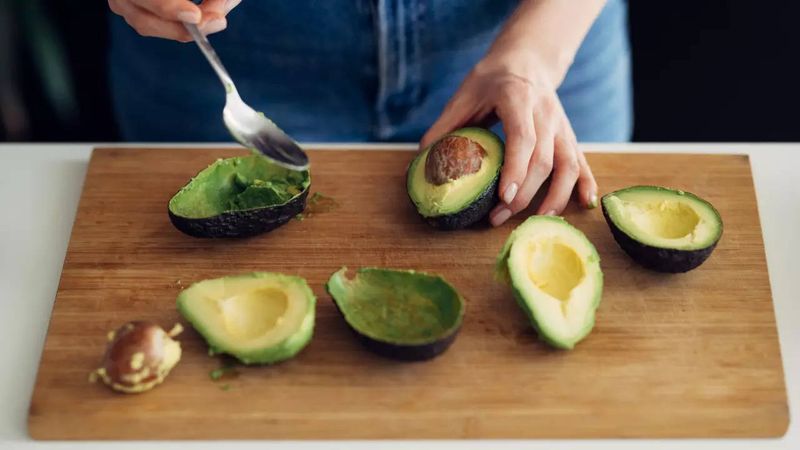
Avocado skin is usually discarded, and for good reason. The tough, dark exterior is not only difficult to digest but also lacks the flavor found in the creamy, rich fruit inside. Although some might experiment with it, it’s generally avoided in culinary applications.
Best to focus on the flesh, which offers healthy fats and vitamins. If you want to explore, consider using the skin for natural dyes or composting, rather than eating.
11. Onion Skins

Onion skins might seem like waste, but they hold surprising uses beyond eating. High in antioxidants, they can be brewed into teas or used to flavor broths. Eating them directly isn’t recommended due to their papery texture.
Consider saving the skins to enhance your culinary creations. They add a deep, rich color and a subtle flavor to homemade stocks and soups. Despite their inedible nature, onion skins offer a unique way to reduce waste.
12. Mango Pits

While mango flesh is delicious, the pit is a different story. Large and fibrous, it’s not something you’d want to eat. The pit can be used to grow a mango tree, offering a more fruitful use.
In culinary terms, it’s best to avoid eating the pit. Focus instead on utilizing the juicy flesh surrounding it. If you’re feeling eco-friendly, consider planting it to enjoy homegrown mangoes in the future!
13. Rhubarb Leaves
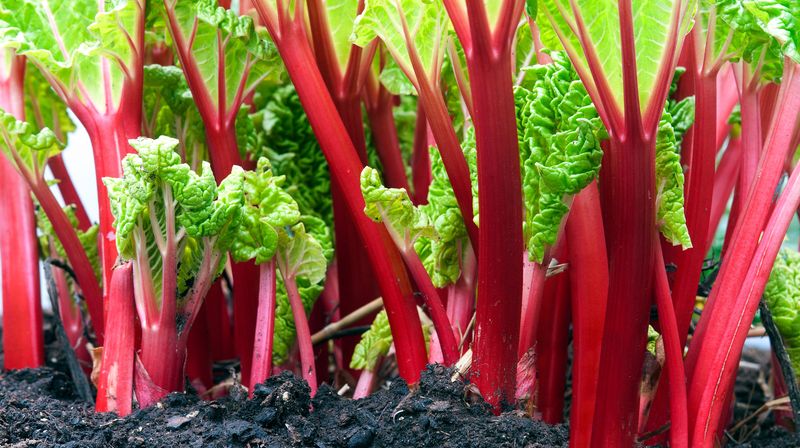
Rhubarb leaves are beautiful but dangerous. Containing high levels of oxalic acid, they are toxic if ingested. While the stalks are a popular ingredient in pies and desserts, the leaves should be avoided at all costs.
Admire them for their aesthetic appeal in the garden, but keep them off your plate. Their toxicity is serious, making them one of the more hazardous peels. Always stick to the stalks when cooking with rhubarb.
14. Pomegranate Rind

The pomegranate rind is a tough exterior that protects the juicy seeds. While not typically consumed, the rind has been used in traditional medicine for its antioxidant properties.
Culinary use is limited, so it’s best to focus on enjoying the seeds. Consider using the rind to make extracts or dyes, or simply discard it after removing the arils.
15. Pineapple Skin
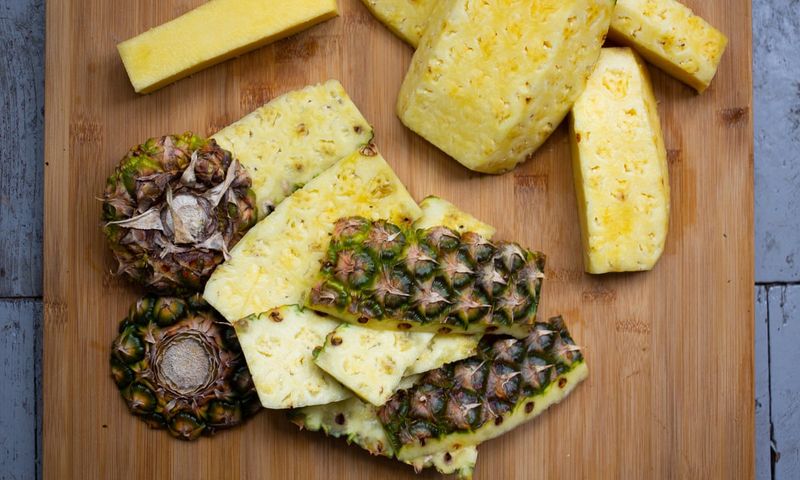
Pineapple skin, with its tough and spiky texture, is not something you’d want to eat. It’s difficult to chew and doesn’t offer much in terms of flavor or nutrition. However, it can be used to infuse water or make vinegar.
While the flesh is sweet and nutritious, the skin serves as a natural defense. Consider using it creatively in your kitchen, but avoid direct consumption.
16. Lychee Shells
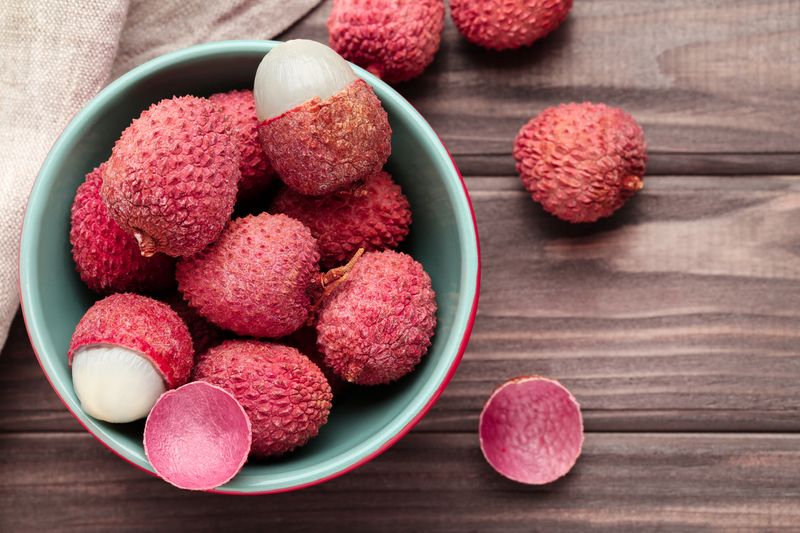
Lychee shells are often discarded due to their tough and spiny exterior. While the sweet, juicy flesh is a treat, the shells are not meant for consumption. They are better suited for composting or as a natural garden mulch.
Recognize them for their protective role rather than as a food source. Save the enjoyment for the delightful fruit inside!
17. Cassava Skin
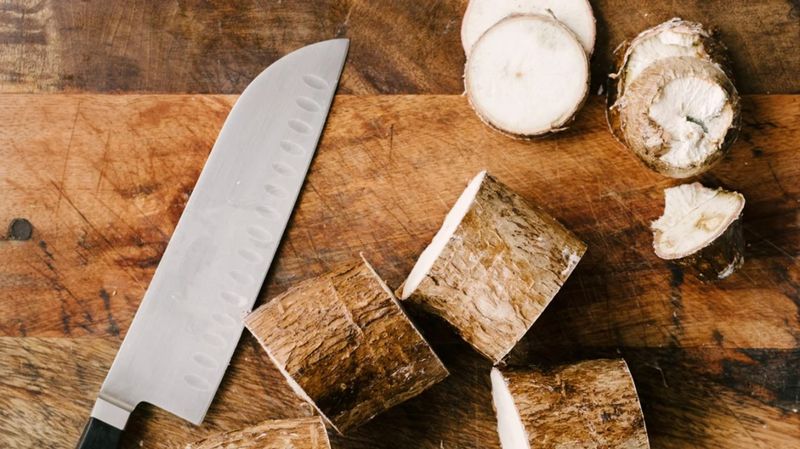
Cassava skins are deceivingly normal looking but must be handled with caution. Containing cyanogenic compounds, they can be toxic if not prepared correctly. While the root itself is a staple in many cuisines, the skin should be removed before cooking.
Always peel cassava thoroughly to ensure safety. It’s a prime example of a peel where caution is key, emphasizing the importance of proper preparation.
Leave a comment